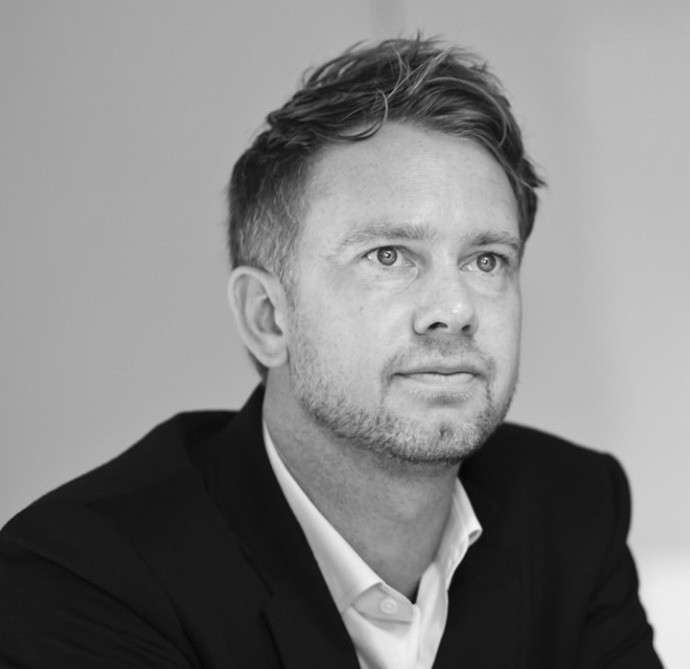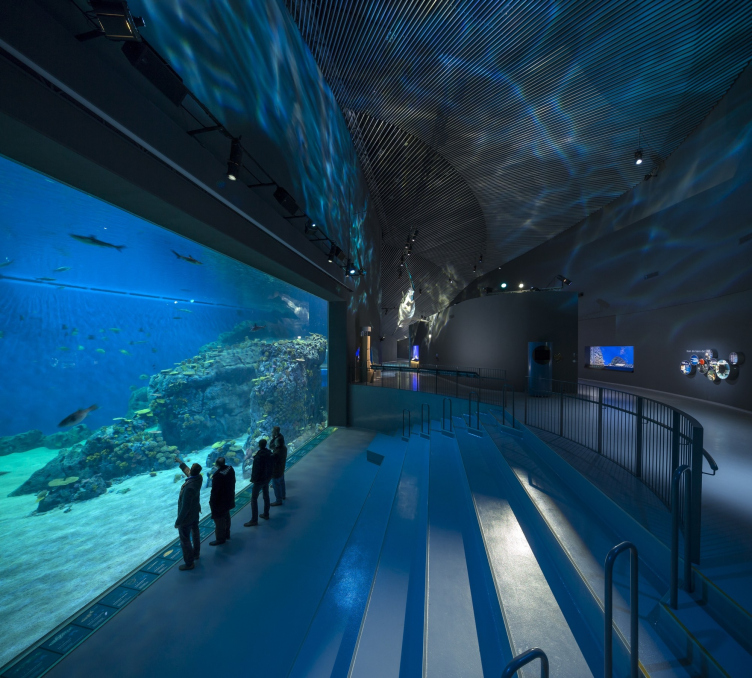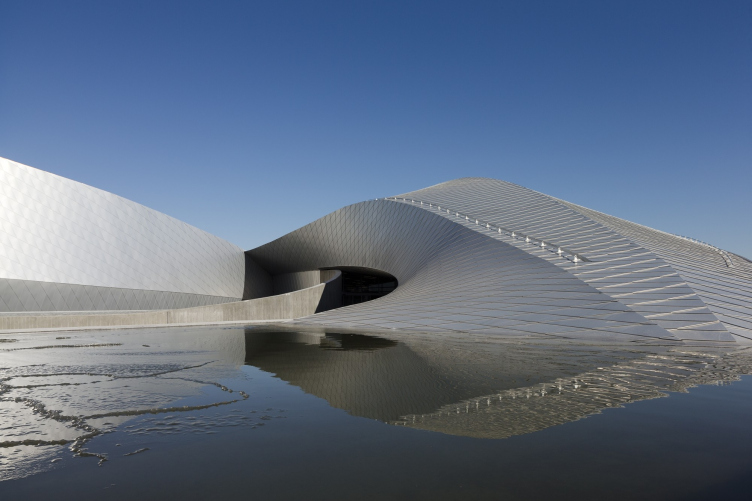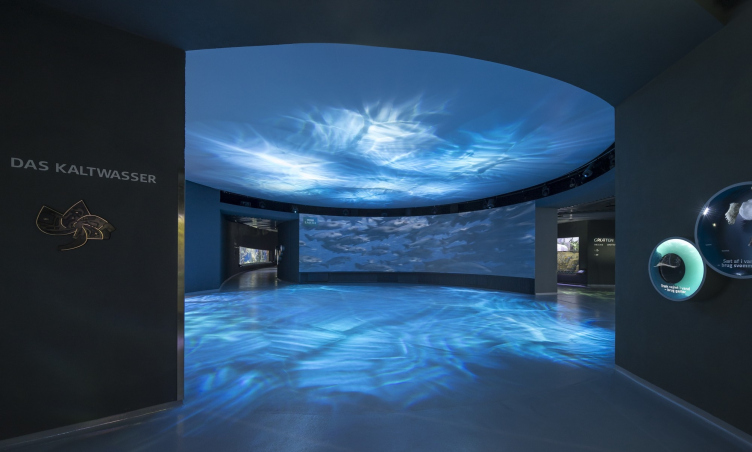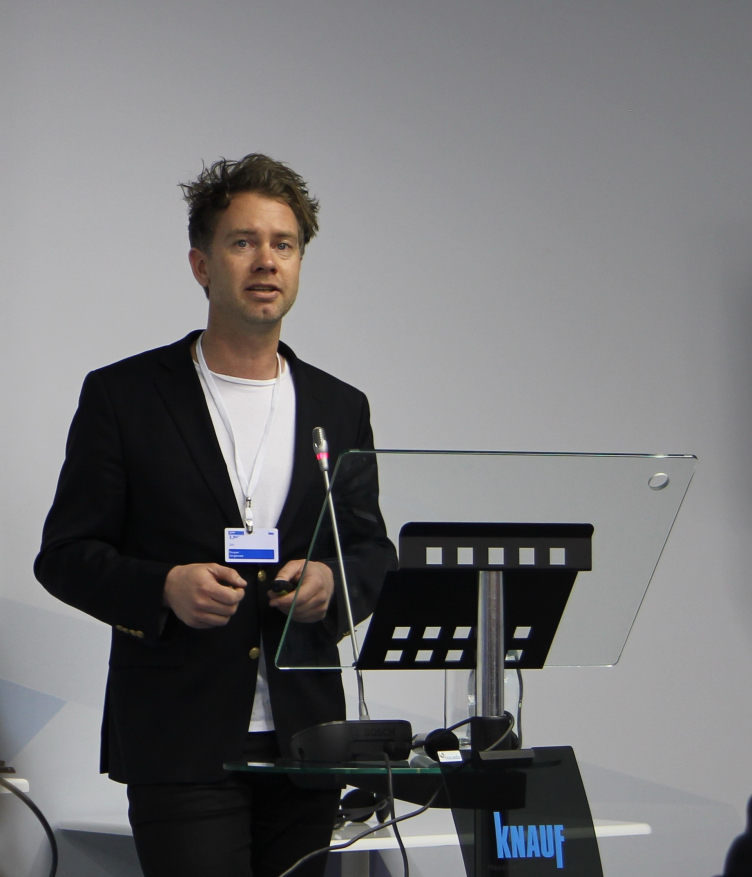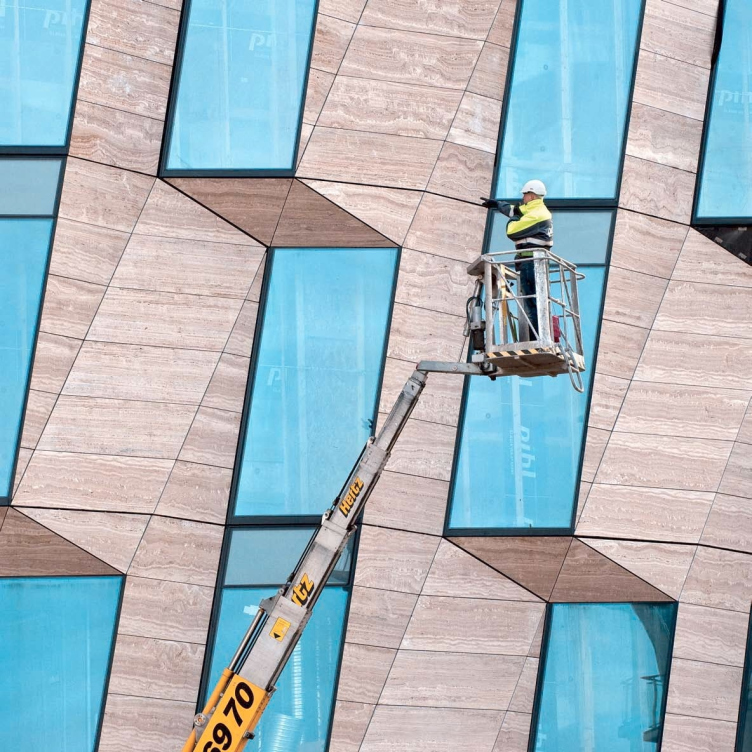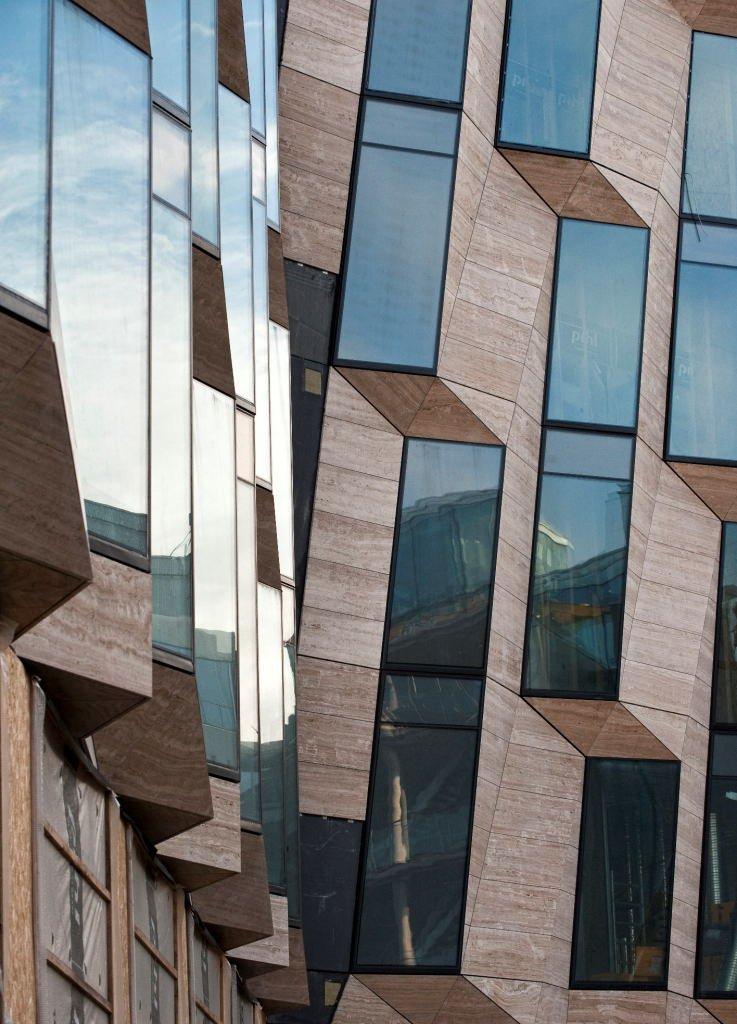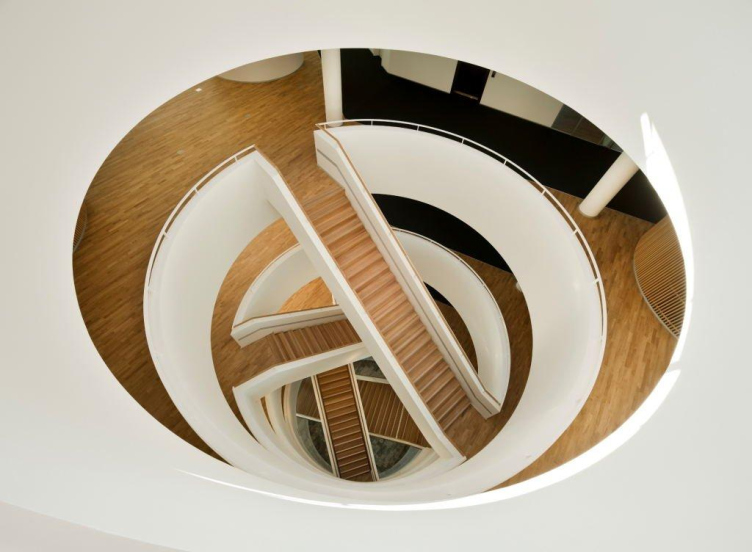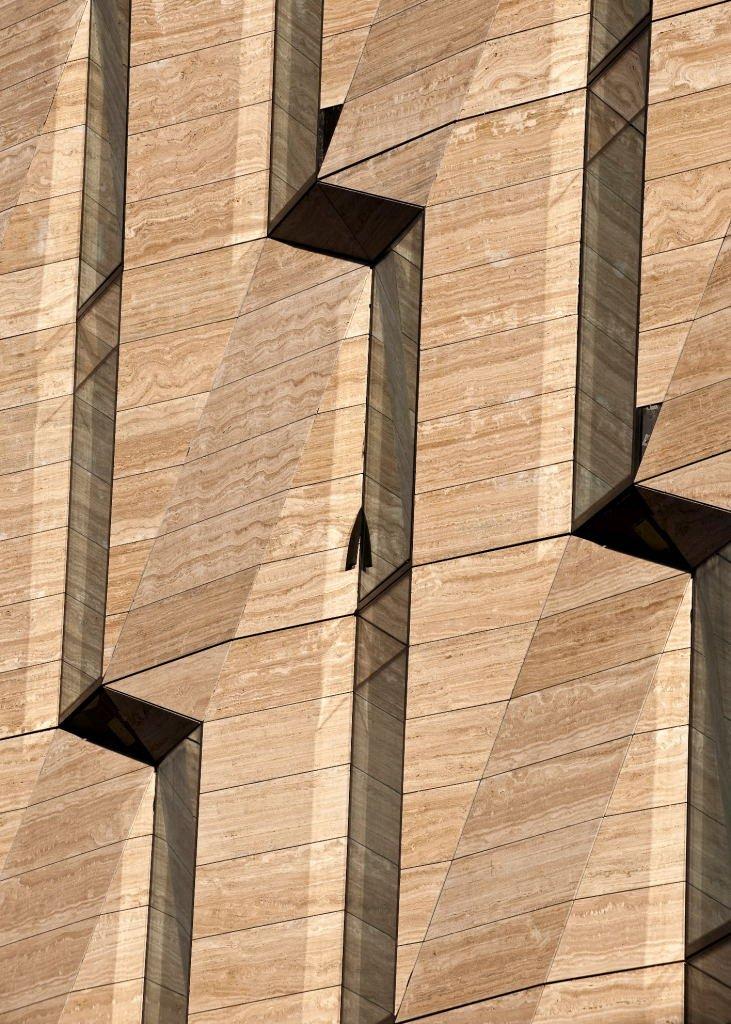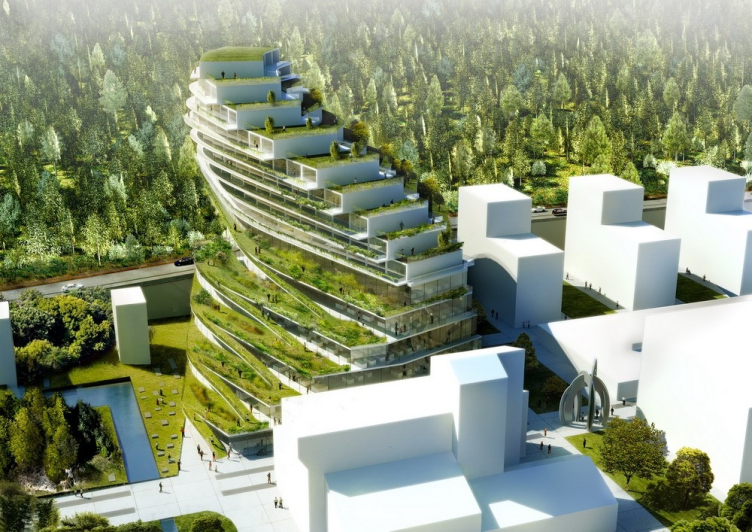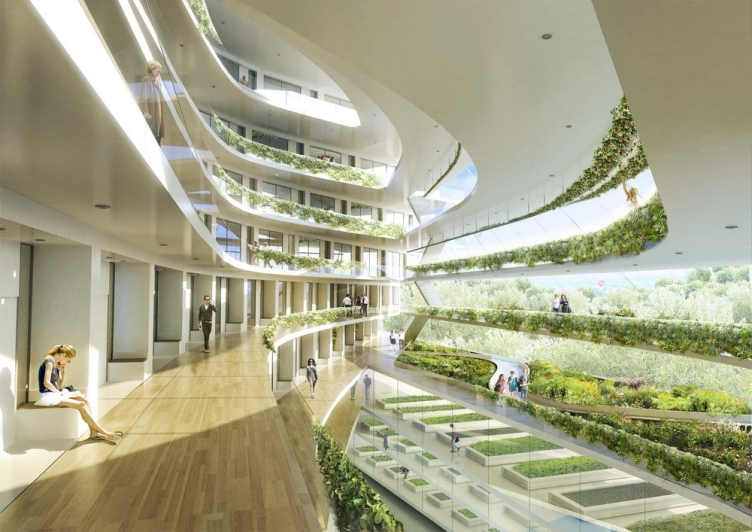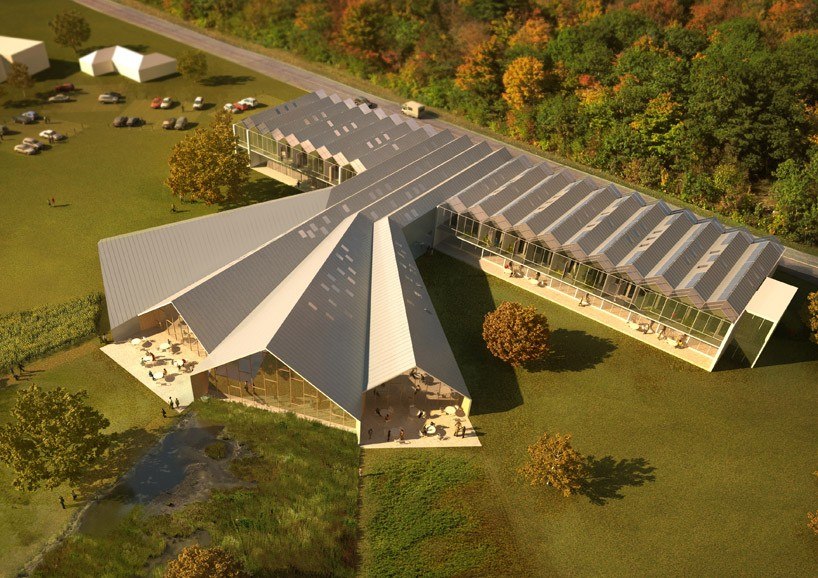- It’s in the nature of GXN to use the daylight as much as possible, or let the tree keep its natural form, or just let materials it live its own natural life. Do you see yourself as a pioneer of such approach?
Kasper Jørgensen
- I think material science is pioneering these years. We really want to take this new knowledge and use it in our buildings. I think there has been a huge gap in architecture. The whole industrialization of the way we build has forced architects for many years to think about straight lines and mass production. Now we actually start to go back a bit and look at nature, its forms and materials to design the solution we want. I think that will be tomorrow’s architecture - a much higher level of tailor-making and new expressions in terms of space and buildings.
- In that most recent built project of 3XN, the Blue Planet Aquarium in Copenhagen, did you have a deliberate intention to bring the inside to the outside? It seems that visitors there feel as if they were the fish in the water, not the other way around.
Kasper Jørgensen
- We wanted tell a story by the building itself. You see, most aquariums today look like factories, or at least like something that doesn’t belong to water. So, it was very much our intention to create a feeling of connecting people to the fish or the universe of the water, and do it the whole way, so that this feeling becomes the heart of the building and embraces you like a wave. When you walk in, the first thing you notice is that the aquarium on top of your head, so you really feel as if you’re under the water. It’s the biggest aquarium in Northern Europe. We have some very big fish in huge ocean tanks. Also it’s a funny building, because we have tropical forests with free flying birds, snakes, turtles, and a lot of places where people can touch the fish and interact with nature.
- Is the aquarium glass bulletproof?
Kasper Jørgensen
- Yes, it’s more than bulletproof.
Archi.ru
- Do the creatures that live there kill each other, like in the wild?
Kasper Jørgensen
- Yes. For example, we have two species of fish, and one actually eats the other. So, maybe in a half a year we will have only one species. But that’s just how nature goes sometimes.
- Do you see materials as tools to facilitate people?
Kasper Jørgensen
- That’s actually what we do at GXN, the innovation unit at 3XN. We’re studying how people react to different materials. In our work we involve a psychologist to find out how materials, space, environment and atmosphere affect people. It’s interesting to investigate how we can actually make buildings that make kids learn better and stimulate knowledge sharing in corporate culture or support visitor’s curiosity in a museum.
Archi.ru
- What does stimulate sharing?
- Social interacting. Creating spaces where people meet, where they pause and do it in informal settings. Providing a right framework and also creating acoustical and visual transparency. Doing that is not about having just one big open space, but actually it’s about diversity in the space that you create. We often perceive our buildings as internal cityscapes with small streets, central passes, quiet corners, places in the shadow, places in the sun… We end up having a lot of variety of contrast in the layout of our space. We always have central staircases and open connections between the floor slabs to create this kind of transparency and allow for more places where people can meet, share knowledge and interact. It’s interesting that staircases actually make you slow down, invite you to talk more together, and offer all this place for people to meet standing or sitting, or waiting... All of this creates dynamics and social interaction.
- Your proposal for the Museum and Exhibition Center of Polytechnic Museum and Moscow State University didn’t win in the recent competition, but it was a very strong concept. Is it going to the archive forever? Could it be actually built elsewhere?
Kasper Jørgensen
- I feel sad it didn’t win. I really liked it. It was a strong example of 3XN’s signature work of integrating with the city and creating open space. I think it would be a very dynamic building. It would bring the Polytechnic exhibition and its various elements together. Many of our projects have some of the same elements. But this project was unique. And there can’t be a place somewhere else to build it, it was very related to that particular place.
Archi.ru
- What is overall story of that building? You’ve probably walked through it many times in your mind. How would it feel to be there?
Kasper Jørgensen
- It was really a story about bringing people together, and the city together with the building as well. It was a space that would be excellent for exhibitions, education and teaching, working and resting. But most importantly, it was taking all these functions and melting them together in this very transparent structure. It would be amazing to actually have this connectivity in such a complex building layout. I’d like to sit on the top of its terrace in the summer, looking inside the building from the outside and being a part of everything around, feeling a part of Moscow. So it’s quite sad that one is not going to be built.
Archi.ru
- Do you still feel inspired with the perspective of working in Moscow? Will you keep trying?
Kasper Jørgensen
- Definitely. We hope to be invited to similar competitions here in Moscow.
Archi.ru
- Let’s imagine you are Chief Architect of Moscow. You have zillions of square km of space and zillions of people living in it. What would you do?
Kasper Jørgensen
- I’d try to make more centers in the city and to promote local identities. So that everything would be not just about one center. All this building mass could be used to create great areas. This city seems a kind of a dead city in many places or times of the day. So I’d try to promote more diversity and make local neighborhoods more attractive.
- Obviously, you are a person who cares very much about the consequences of his actions. Why did you choose architecture? Why not philosophy or a fight against hunger or poverty?
Kasper Jørgensen
- Architecture has many powerful ways to affect our lives. Some of the biggest challenges come from the building industry. If you think about energy consumption or waste, there are so many things we can improve through architecture and building industry. I’m not necessarily thinking about saving the world, but I would like to do things with a good quality. I think it’s just common sense to make buildings that don’t make you sick. It’s natural to make buildings that can have a value after they have been turned down, and it’s logical to use materials that can be recycled. Why not make buildings that are positive instead of just minimizing the negative consequences that we always hear about? We can make buildings that produce oxygen, energy and clean water, buildings that are integrated with the nature. I think that’s why I really like being an architect, because it allows me to play with all these challenges and find solutions that come to life and become real for many more than just myself.
- Are you concerned with making this kind of a research and designing process available to other people?
Kasper Jørgensen
- Everything we do is open source. Of course I would not like our design to be copied, but the philosophy and the research is really to be shared. I believe architecture is best when it’s unique for a specific kind and a specific site. But we share all the knowledge we have. If you share ideas, tools and strategies, it all comes back to you. So we’re showing by example how sustainable architecture can work, and we’re hoping that this way we’re helping to build a better future.
- Is your idea of sustainability wider than just green and eco? Does it mean something that gains value over time?
Kasper Jørgensen
- Yes. I see a building like an organism that becomes a part of a man-made eco-system. It can be taken apart and be integrated into another building, in a kind of circle of a building life.With such a mind-set, we can create this regenerative architecture that gives more than it takes.
Archi.ru
- Would you rather not demolish buildings at all?
Kasper Jørgensen
- Ideally I see a building becoming raw material for future buildings components. The reality is that today many buildings components are toxic. So, we can’t reuse it. But by staffing buildings with healthy materials we can actually create a scenario where turning down a building is not a bad thing, because it gives a new life to future projects. We don’t make buildings as we did twenty years ago and not even ten years ago. People will have different needs tomorrow. Building technology will be totally different in another ten years. So, I think we need to keep using the possibilities we have in our hands to create the best possible environment.
Archi.ru
- Do you feel we should build for eternity?
Kasper Jørgensen
- No, I don’t think so. We should build for the ongoing evolution.
